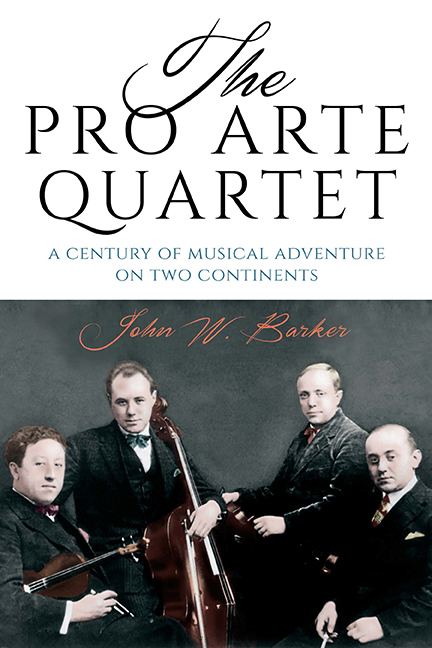Book contents
- Frontmatter
- Dedication
- Contents
- Preface
- Lists of Quartet Membership
- Introduction: Quartet Contexts
- 1 The Onnou Years, I (1912–31)
- 2 The Onnou Years, II (1932–40)
- 3 The Brosa Years (1940–44)
- 4 The Kolisch Years (1944–67)
- 5 The Paulu Years, I (1967–79)
- 6 The Paulu Years, II (1979–95)
- 7 The Perry Years (1995–Present)
- Conclusion: Retrospect and Prospects
- Appendixes
- Selected Bibliography
- Index A Composers
- Index B General
4 - The Kolisch Years (1944–67)
Published online by Cambridge University Press: 10 June 2021
- Frontmatter
- Dedication
- Contents
- Preface
- Lists of Quartet Membership
- Introduction: Quartet Contexts
- 1 The Onnou Years, I (1912–31)
- 2 The Onnou Years, II (1932–40)
- 3 The Brosa Years (1940–44)
- 4 The Kolisch Years (1944–67)
- 5 The Paulu Years, I (1967–79)
- 6 The Paulu Years, II (1979–95)
- 7 The Perry Years (1995–Present)
- Conclusion: Retrospect and Prospects
- Appendixes
- Selected Bibliography
- Index A Composers
- Index B General
Summary
Personalities and Style
Rudolf Kolisch (1896–1978) was one of the most important musicians of the twentieth century. The kind of career to which he committed himself has somewhat obscured that fact for the general consciousness. Scandalously, he has yet to be given a full-scale biography— the writing of which would be a major task. During his lifetime, he discouraged the idea, saying that he was “too busy” for such a thing.
Kolisch was born in the small Austrian town of Klamm am Semmering, son of a prominent physician (whom some claim as the modern definer of diabetes). In his sophisticated bourgeois family, his talents were recognized early. At age six he began musical studies, primarily on the violin, but also on piano, and eventually in conducting and composing. At age seven he suffered an accidental crushing by a door, which cost him the first joint of his left hand's middle finger. This damage did not deter young Kolisch, who became a “southpaw,” learning to play the violin with reversed hands—right hand fingering and left hand bowing. He had a Stradivarius violin reconditioned to serve the bowing requirements, with the order of the strings reversed, running from left to right as e“–a'–d'–g in place of the usual g–d'–a'–e”.
This practice was not totally unprecedented among professional violinists, but it would affect his own playing as well as his work as leader of a string quartet. A common seating pattern for such an ensemble would spread the players by range—first violin, second violin, viola, cello—from right to left in an arc. The Brussels group had modified this pattern so that the cello was in the rear right, and the viola front right. The practice Kolisch used, with some variants, was usually, from right to left, second violin-viola-cello-first violin. If all this looked a bit odd, it had the virtue of having every instrument facing out to the audience, instead of one on the right turned inward—thereby particularly enhancing the projection of the often understated viola.
It may be added that Kolisch also pursued piano studies, and though he did not use this instrument normally in public, there were documented instances when he did so—as we shall see below.
- Type
- Chapter
- Information
- The Pro Arte QuartetA Century of Musical Adventure on Two Continents, pp. 111 - 165Publisher: Boydell & BrewerPrint publication year: 2017



